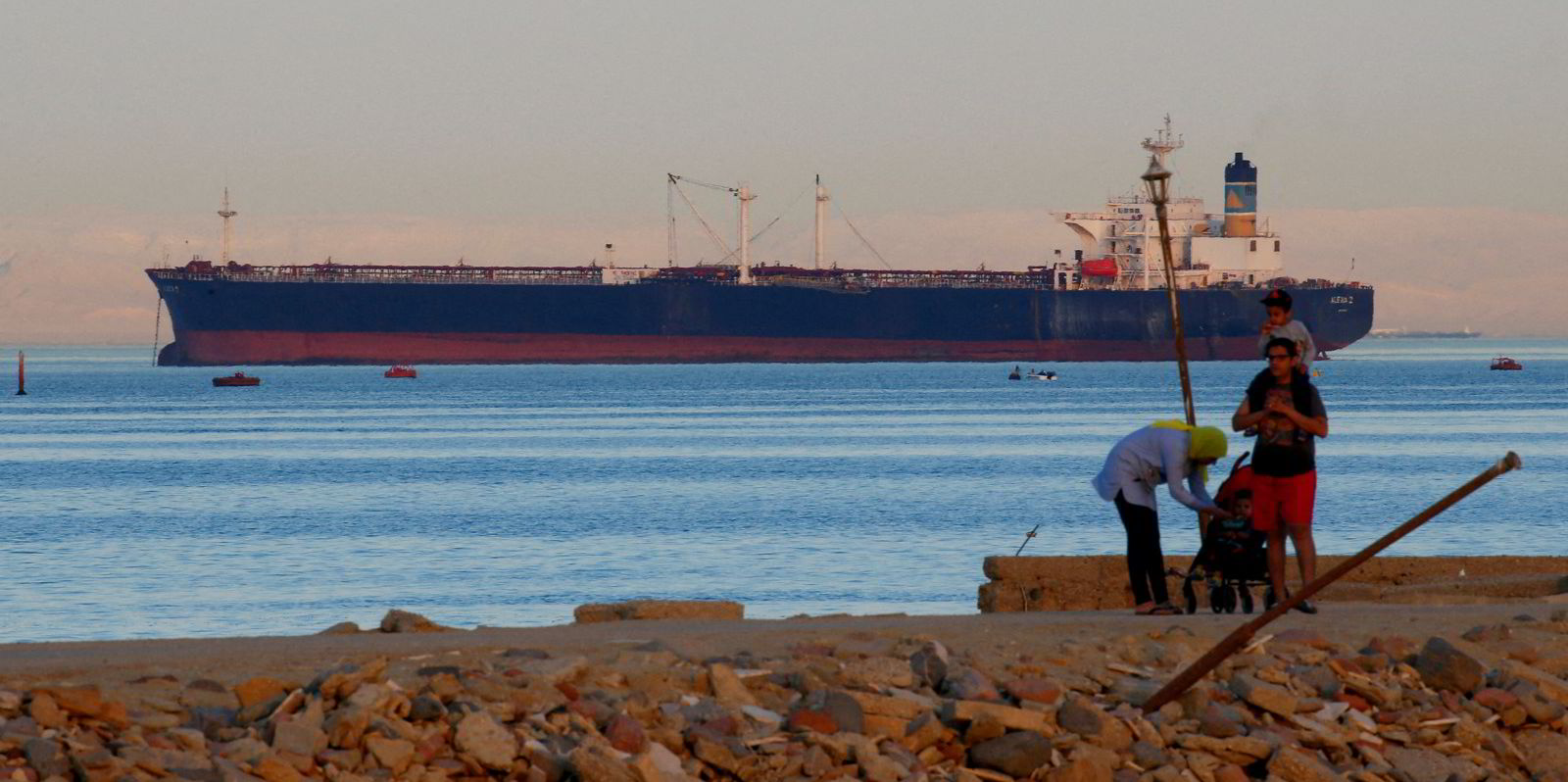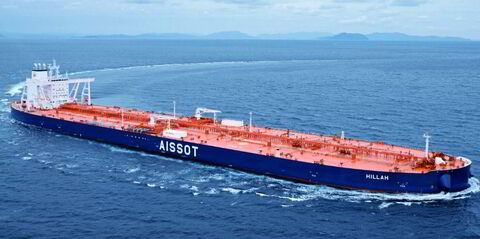The Houthi menace on shipping in the Red Sea and Gulf of Aden is not only leading to higher greenhouse gas emissions for ships that go the longer way around the Cape of Good Hope.
The diversion may also deliver a blow to a ship’s carbon intensity grade under International Maritime Organization regulations, according to an estimate by MIS Marine, a UK-headquartered marine assurance technology firm.
The Carbon Intensity Indicator, which is also referred to as CII, grades vessels from A to E based on their CO2 emissions per tonne of cargo capacity and distance travelled.
MIS lead data scientist Joe Anderson told TradeWinds that if ships were taking the longer, 7,700 nautical mile (14,200 km) voyage around South Africa to travel between Rotterdam and Singapore at the same speed as the 5,100 nautical mile Suez Canal route, it might improve a ship’s carbon intensity score. That is because of the impact of distance on the equation.
But faster speeds, and the higher fuel consumption associated with them, can have a bigger impact in the other direction.
“We’ve seen an increase in speed of vessels going around the Cape, and that has immense and negative impacts on the CII,” he told TradeWinds in an interview.
A 100,000-dwt tanker would see a 17% increase in carbon intensity under the CII maths, Anderson said. In some instances, that could drag down a ship’s ultimate letter grade.
The firm’s estimate assumes that a ship would sail about 10% faster on a Cape of Good Hope route, which would boost fuel consumption by 291 tonnes and pump out an additional 920 tonnes of CO2, not to mention an extra $170,000 in bunker costs.

The role of distance in the IMO’s carbon intensity equation has led some to question the regulation’s effectiveness in assisting shipping to reduce its greenhouse gas footprint because it might inadvertently encourage longer voyages to achieve a more favourable score.
But MIS managing director Dominic McKnight Hardy said there is a need for better insight into what makes a carbon intensity grade.
“The CII calculation itself is simple but effective. There’s no point adding complexity,” he said, though he acknowledged that there is some “brute force” to the way the regulation is based on a calendar year.
The IMO is currently negotiating revisions to the carbon intensity regulation.
The Red Sea crisis is the latest in a series of black swan events that have shaken up supply chains and forced ships onto less carbon-efficient routes.
Anderson said that highlights the importance of live data in making informed decisions that consider the impacts on carbon intensity scores, particularly as disruptions become more prevalent.
He said many shipowners are looking at IMO carbon intensity scores annually, but events such as the Red Sea crisis can slam annual planning.
Real-time impacts
“The impact of these events and what they’re showing is that you need to be able to review and assess these things on a live basis,” he said.
If ships were already travelling at a rapid speed, adding a longer distance can lead to a different outcome in the IMO’s carbon intensity equation.

TradeWinds reported on 19 January that another technology firm, Veson Nautical, estimated that an ultra large container ship could see a 6% improvement in its carbon intensity by taking the longer route.
The firm assumed a speed of 15.7 knots (29 km per hour) on the longer route, which is only 5% faster than the assumed speed for a ship on the shorter Suez Canal route.
Overall, the Cape route would still lead to 50% more CO2 emissions, the firm estimated.
The longer distance and faster speeds will also lift a company’s costs under the European Union’s Emissions Trading System, which entered into force at the start of this year and requires ships on voyages to and from the EU to buy carbon credits.
Veson Nautical group product manager group told TradeWinds that a ship travelling at 14 knots consuming 45 tonnes per day of bunker fuel could see EU carbon allowance costs rise from $52,000 to $94,000 by diverting to the Cape of Good Hope.
But here speed can change things as well. A ship travelling at 20 knots and consuming 145 tonnes per day would see EU carbon costs rise to $211,000 on the longer route, from $115,000 on the shorter route, he estimated.




